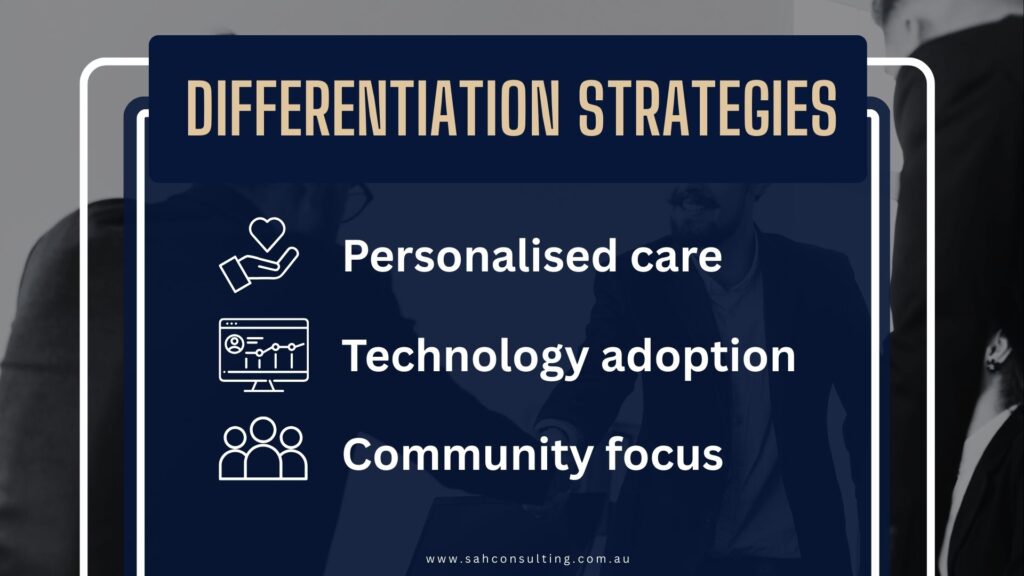Australia’s aged care sector is undergoing a significant transformation. With new regulations, shifting consumer expectations, and ongoing workforce pressures, providers must adapt quickly to remain competitive and compliant. Building a sustainable aged care business today means staying informed, agile, and focused on delivering consistent, high-quality services.
A major driver of this change is the Support at Home program—an Australian Government reform that will replace existing home care schemes with a simplified funding model. For providers seeking to understand how to provide quality aged care in this evolving landscape, it’s essential to grasp the full impact of these changes.
This guide outlines the key strategies needed for long-term success, including regulatory compliance, market positioning, workforce planning, service differentiation, and the smart use of technology.
Understanding the Aged Care Industry Landscape
The Royal Commission on Aged Care Quality and Safety revealed systemic problems, leading the government to implement the Support at Home program. This program seeks to enhance current in-home aged care services, providing improved access to care, equipment, and home adjustments to support older Australians in maintaining their independence for an extended period.
Here’s what you need to know about the upcoming changes:
- From 1 July 2025, the Support at Home program will replace:
- The Home Care Packages (HCP) Program, and
- The Short-Term Restorative Care (STRC) Program.
- The Commonwealth Home Support Programme (CHSP) will transition later, but not before 1 July 2027. This gives providers more time to adjust their services and payment systems.
- A new Single Assessment System began in July 2024. It’s designed to make it easier for older Australians to get assessed and access the right services.
For providers, these changes entail adjusting to new regulatory standards and business practices. Individuals aiming to expand their services or join the sector need to know how to become an approved aged care provider amidst these changes. By evaluating their current practices and adapting to the changing system, businesses can prepare themselves for sustainable success in a more transparent and client-centred aged-care landscape.
Embracing Regulatory Changes and Meeting Compliance Standards
Aged care providers need to be ready for stricter compliance rules under the new system. The Aged Care Quality and Safety Commission (ACQSC) will oversee all registered providers to ensure they meet the Strengthened Aged Care Standards. Failing to comply may lead to serious consequences, including financial penalties or even the loss of registration. Staying ahead of these requirements is key to maintaining service continuity and trust.
To stay compliant:
- Strengthen governance – Implement clear policies, risk management plans, and accountability structures.
- Invest in compliance training – Ensure staff understand new legislative requirements and quality standards.
- Stay updated – Monitor changes to regulations, especially those tied to the Provider Register, which will track registration categories, service types, and compliance status.
Setting up strong systems now will help providers meet regulatory obligations, maintain service quality, and avoid disruptions under the Support at Home program.
Positioning Your Aged Care Business for the Future
Long-Term Strategic Positioning
A clear strategy is crucial for a sustainable senior care enterprise. Providers need to establish their market role by focusing on particular customer segments—determined by age, financial ability, cultural background, or care requirements. Expanding services, like providing home care and specialised assistance, can enhance long-term sustainability
Differentiation Strategies

Standing out in the aged care sector requires a unique approach. Providers can differentiate by:
- Personalised care – Tailoring services to individual needs.
- Technology adoption – Using digital tools to enhance service delivery.
- Community focus – Addressing gaps in care, such as supporting Indigenous Australians or those in rural areas.
Strategic positioning and differentiation will help providers remain competitive in a rapidly evolving industry.
Registration for the Support at Home Program
The Support at Home programme will replace the Home Care Packages (HCP) and Short-Term Restorative Care (STRC) programmes. This change aims to create a simpler and fairer system for in-home aged care under Australian Government reforms.
Under the new universal provider registration model, aged care providers will only need one registration to deliver all types of aged care services. This reduces admin tasks and gives the government better oversight. To register, providers must apply through the Aged Care Quality and Safety Commission (ACQSC) and share details such as:
- Services offered
- Location and staffing
- Organisational capability
There are six registration levels, based on the complexity and risk of the services offered. Providers delivering higher-risk care will need to go through audits as part of the process.
If you’re exploring how to provide quality aged care or start a private home care business in Australia, securing Support at Home registration is essential. New providers must meet ACQSC requirements, while existing ones will be automatically moved to the new system under the updated Aged Care Act.
Launch Your Support at Home Business with SAH Consulting
Learning the Support at Home registration procedure may be intricate, but at SAH Consulting, we aim to simplify it for you. We focus on assisting aged care providers in effectively registering and functioning within the new Australian government framework, ensuring compliance and a seamless transition.
Our team offers professional advice throughout the entire process, from grasping eligibility criteria to creating the essential policy and procedure documents. We help with business systems, compliance evaluations, payment setups, and implementing the Single Assessment System, allowing you to concentrate on providing quality care.
With SAH Consulting, you won’t have to navigate these challenges alone. Get in touch with us today for personalised support, and let’s set your business up for success under the Support at Home program.
Addressing Workforce Challenges and Ensuring Sustainability
Shortages in the workforce, especially in clinical positions, continue to pose a major challenge in the aged care industry. To achieve sustainability, providers should implement strategies that draw in and maintain talented employees, like providing flexible work options, opportunities for career growth, and solid workplace assistance.
Investing in continuous training and professional growth, along with collaborations with educational institutions, can cultivate a dedicated and skilled workforce. Equally significant, creating a positive work environment—where staff feel appreciated and supported—can decrease turnover and improve job satisfaction, ultimately resulting in improved care outcomes for older Australians.
Leveraging Technology for Better Care and Operational Efficiency
Embracing digital tools is essential for improving care quality and operational efficiency in aged care in the Australian government system. Technologies like remote monitoring, automated service delivery, and patient management systems can streamline operations and enhance client outcomes. For providers looking into how to provide quality aged care, technology plays a central role—enabling better oversight, personalised service, and faster response times.
To stay competitive, providers must carefully evaluate and implement the right solutions, ensuring they align with business needs and regulatory requirements. Beyond efficiency, leveraging technology also boosts transparency and care quality, meeting the growing expectations of consumers and positioning providers for long-term success in an evolving aged care landscape.
Managing Budgeting and Payments in a Changing Landscape
With the Support at Home program set to change funding and payment structures, aged care providers must adapt to ensure financial stability. Optimising cash flow, budgeting effectively, and aligning services with new payment models will be crucial for maintaining high-quality care.
Providers should review their financial strategies, streamline expenses, and implement efficient billing systems to stay sustainable. Partnering with financial experts who understand aged care in the Australian government framework can help businesses navigate these changes, ensuring their models remain viable while continuing to meet the evolving needs of older Australians.
Conclusion
The aged care sector is changing fast, and providers need to be proactive to stay ahead. Success now depends on clear strategic planning, meeting regulatory requirements, and offering services that stand out. With the Support at Home programme bringing in new registration rules, understanding and adapting to these changes is key to long-term success.
If you’re unsure how to provide quality aged care under the new framework, expert support can make all the difference. At SAH Consulting, we help aged care providers confidently navigate the evolving Australian government system. Whether you’re launching a new business or adjusting to new rules, our team offers tailored advice to guide you every step of the way.
Start preparing for a sustainable future in aged care—reach out to SAH Consulting today for trusted, expert support.
